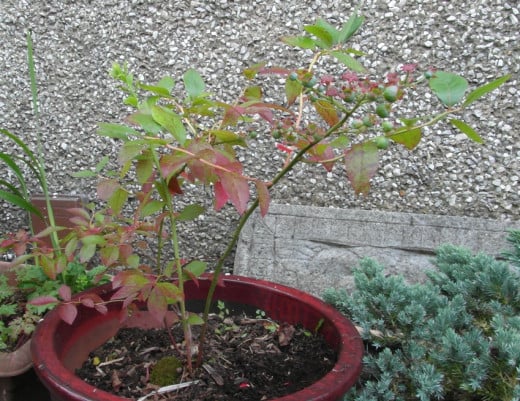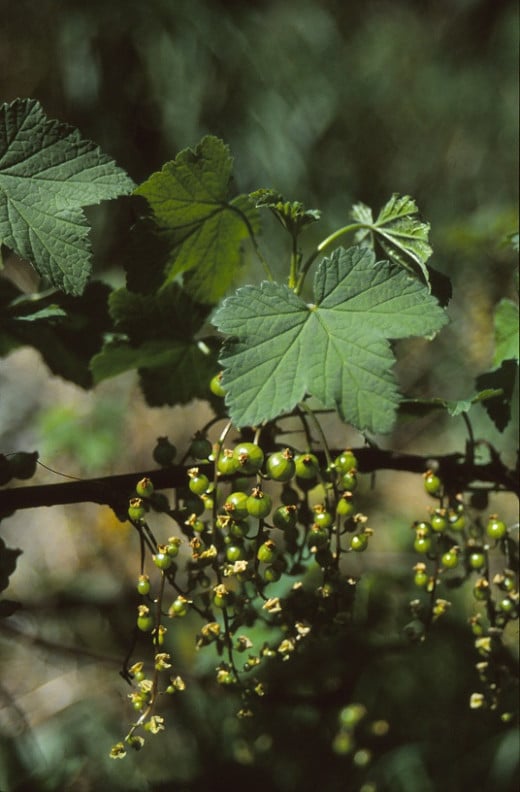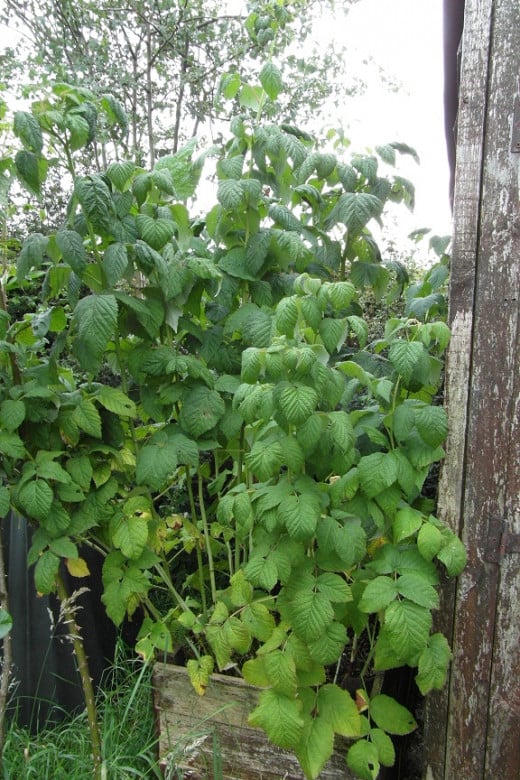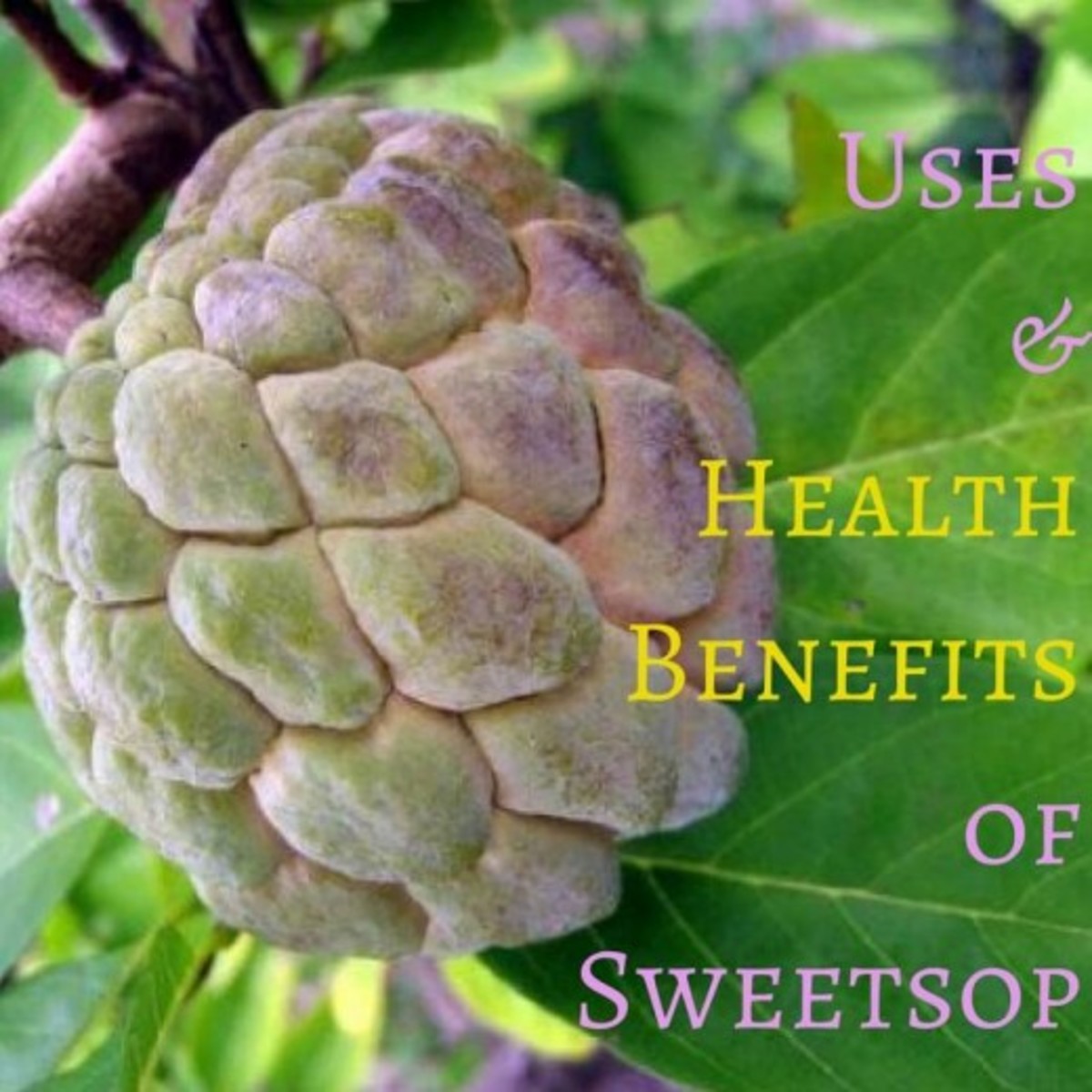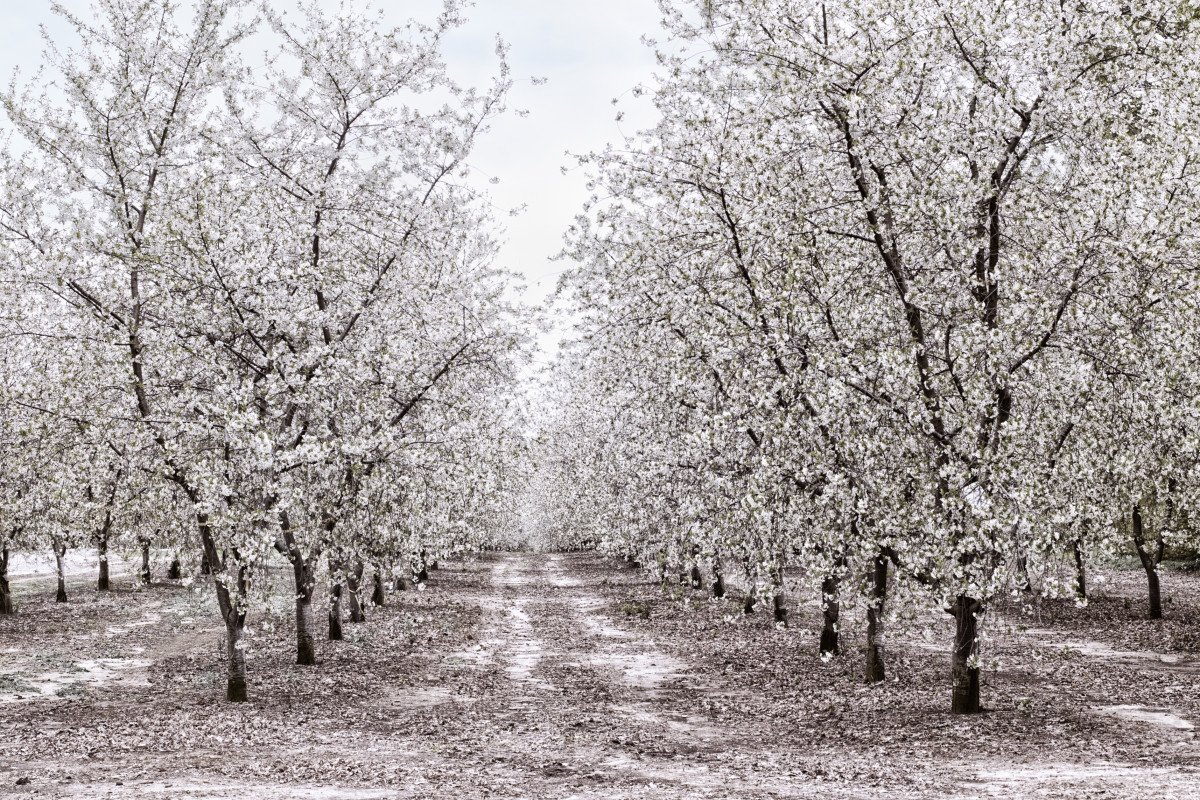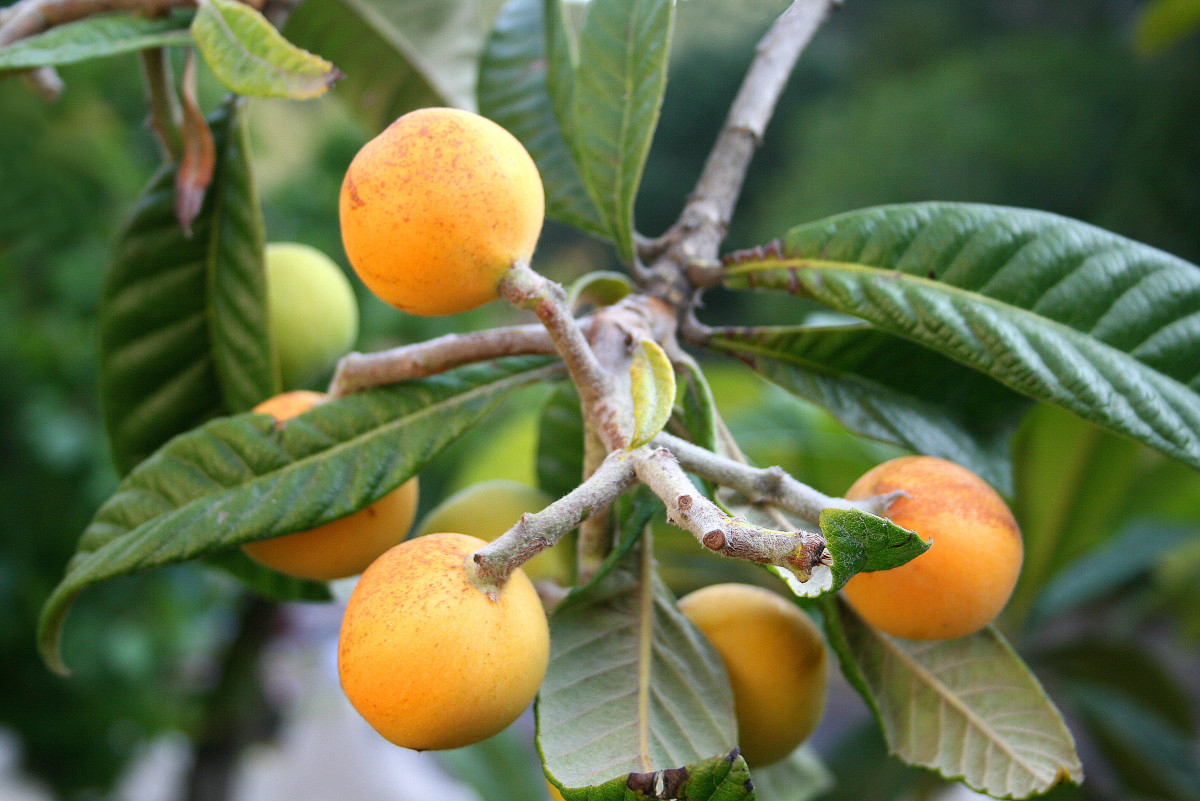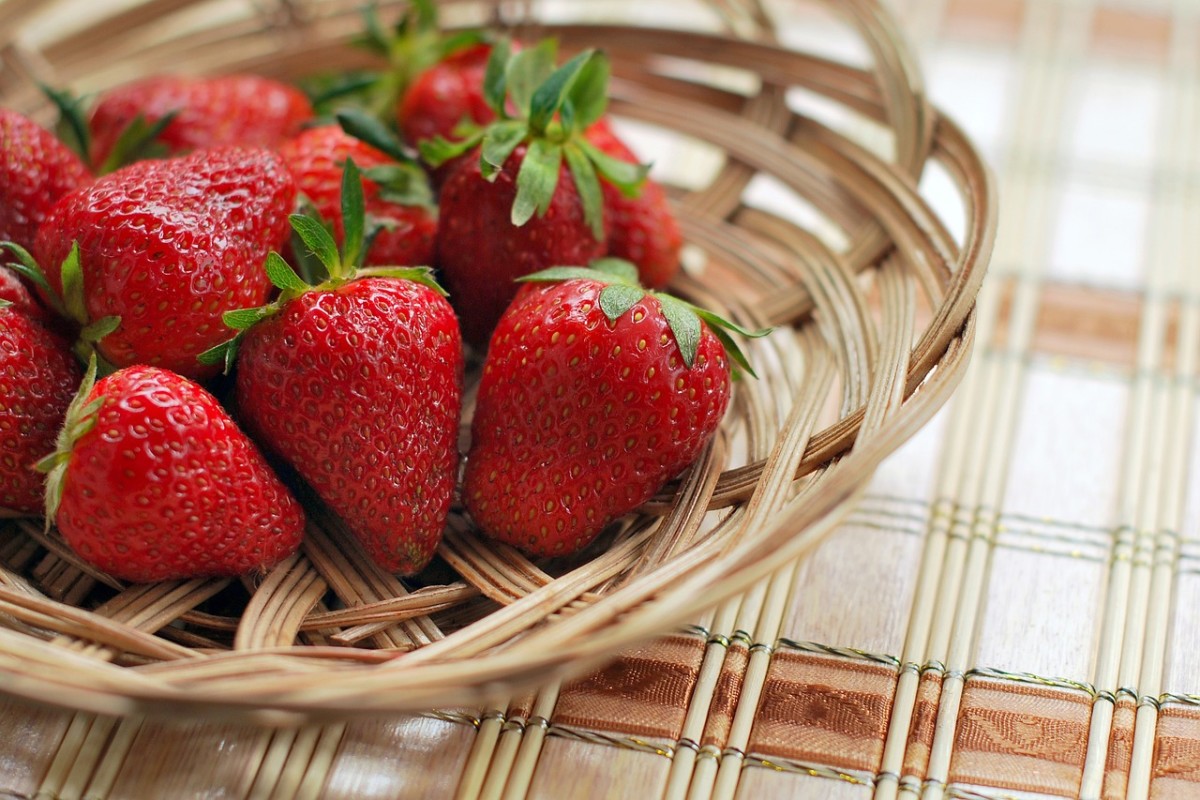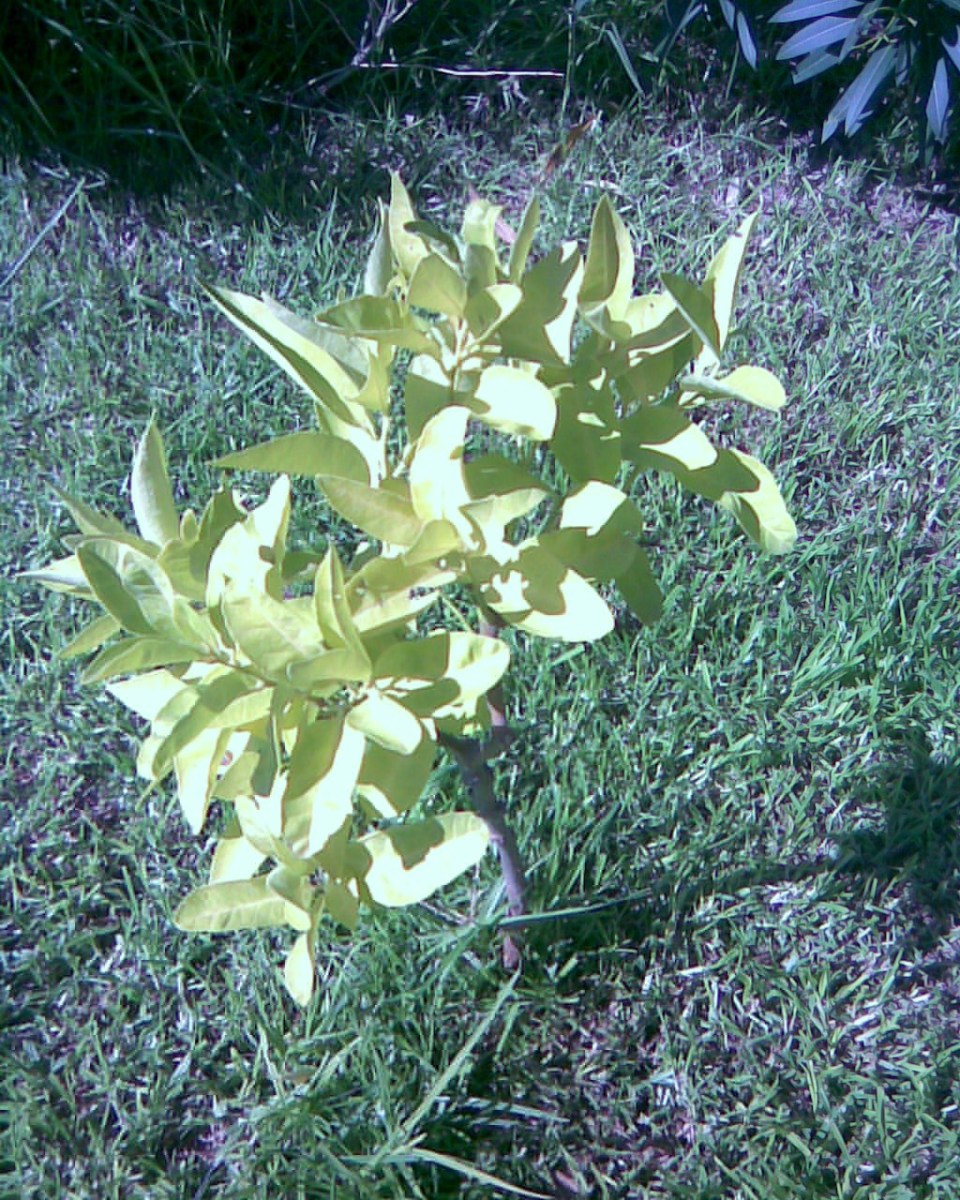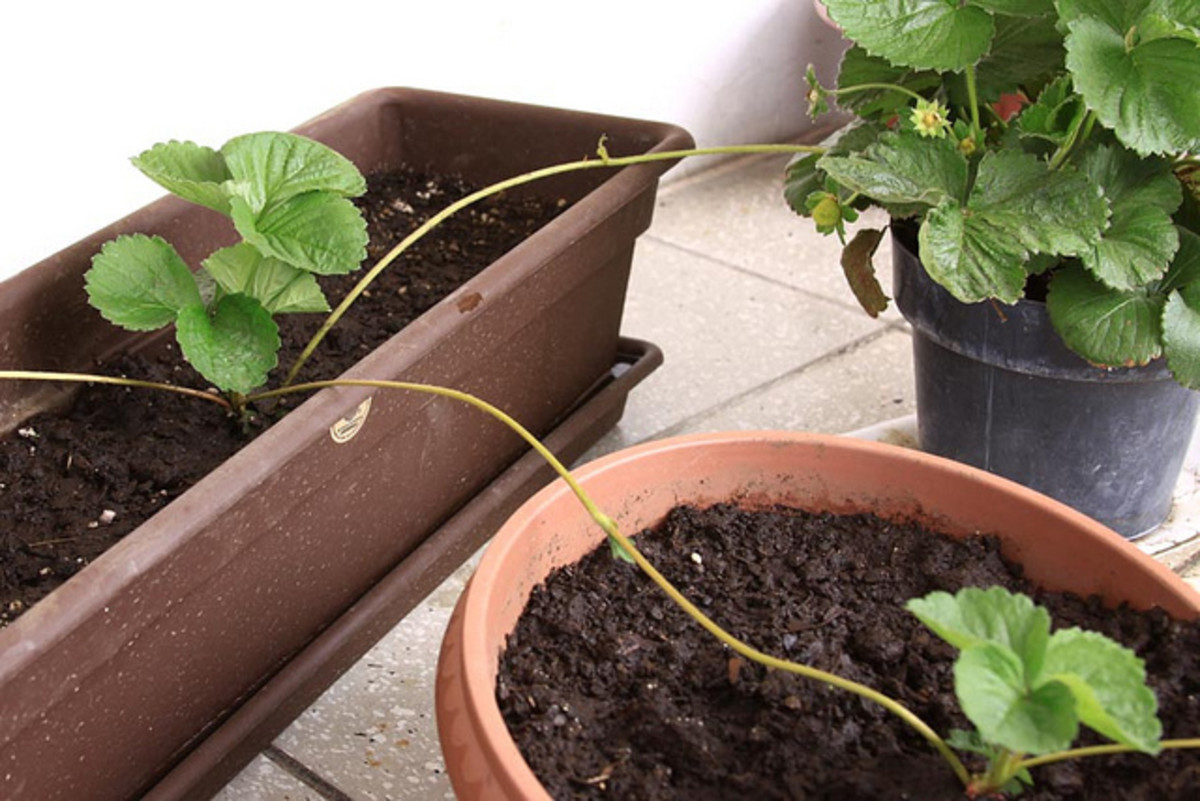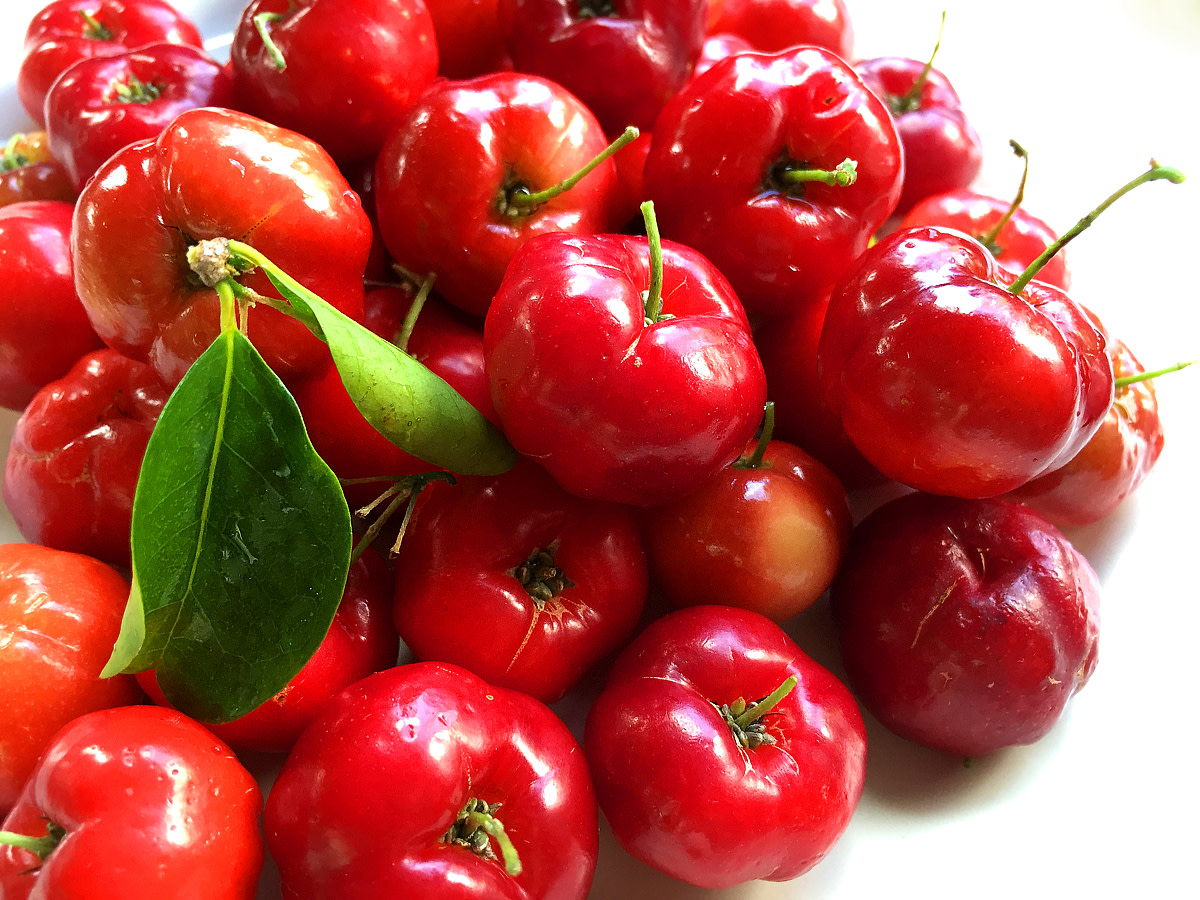Trees and Shrubs for Fruits and Nuts
Fruit Bearing Shrubs
The first thing to decide when selecting a fruit bearing tree or shrub is do you want edible fruit or purely ornamental fruit. Shrubs such as pyracantha are grown primarily for their decorative fruit which are not edible for humans, but greatly appreciated by birds. (Gardeners don't always greatly appreciate the birds for eating them all though!). Shrubs such as the red current are functional rather than particularly decorative, but reliably produce delicious crops of currents which we can enjoy. Fruit-bearing trees and shrubs are invaluable if you have a home farm or smallholding and are aiming to become self sufficient.
It is possible to combine decorative with edible for example by training apple trees against a wall into a fan shape or by choosing a decorative crab apple and using some of the fruit for crab apple jelly but leaving some on the tree for autumn colour.
Buying Fruit Trees
It is absolutely worthwhile to go to a specialist fruit nursery if you are buying edible fruit and nut trees or shrubs. A specialist nursery will give you a far wider range of varieties to choose from - some carry over 300 varieties of apple! For species such as apples which are usually grown grafted on to a different rootstock, they will be able to advice which root stock is most suitable for your situation.
They will also be able to advise you about which species or varieties are self fertile and which need to be planted alongside another variety to get the best results. Because they take up quite a bit of space and may take 2 years or more before they are productive take time to research the options and if possible taste the fruits so that you select productive varieties which you will enjoy eating.
Before making your choice, for species such as apples you will have to decide whether you want varieties which are most suitable as cookers, dessert or the production of alcoholic beverages.
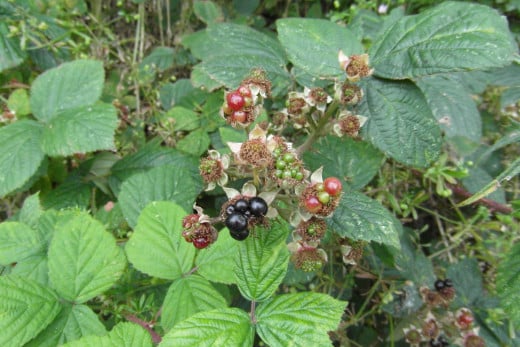
Edible Fruit Shrubs
Blackberry, aka Bramble (Rubus fruticosus) blackberries fruit prolifically and are so common in hedgerows, therefore available for foraging, that if you have a small garden it is a fruit you can leave out. However, an advantage of selecting one for your garden is that you can choose a thornless variety which makes picking the fruit altogether a less painful business!



Blueberry (Vaccinium) - will only thrive in acid soils, but can be grown in a tub if your garden soil in neutral to alkaline. Most require cross pollination but there is a self fertile variety. It enjoys wet conditions, so in a damp summer when some of your other soft fruits have disappointed, this is one to cheer you up.
Currants (Ribes rubrum) - black, red and white. The crucial thing with currants is to get your pruning right. Red and white currants produce their fruit on new growth each year, so prune these
Gooseberry (Ribes uva-crispa) - generally self pollinating so you can grow one on its own. The downside with gooseberry plants is that a lot of varieties are susceptible to mildew
Grapes (Vitis) - it is possible to grow wine making grapes in cooler areas such as the UK, but for eaters either a cold greenhouse or a warmer climate is best. Usually trained along wires they can make an attractive division in a garden taking up less space than a traditional hedge would.
Raspberry (Rubus ideaus) - the familiar red fruit comes in summer and autumn cropping varieties and there is now a yellow version too called 'Allgold'
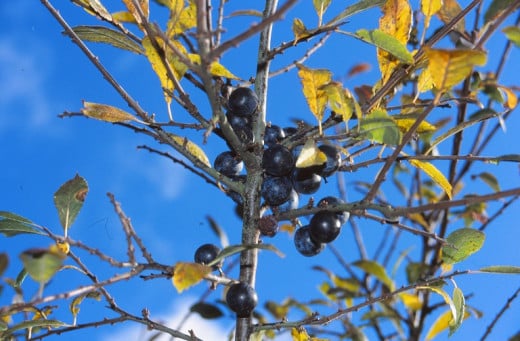
Sloes - I hesitate to put sloes in the edible category although I am assured they are acceptable combined with other fruits in a savoury jelly for cold meats. They can also be used to make sloe gin. I am not the person to ask about whether they improve the flavour of gin, but I sincerely hope the gin improves their flavour. The one time I bit into one, it was so tart it completely dried my mouth out and it took a while for the saliva to start flowing again!
Other fruiting shrubs you could consider - cranberry, goji berry, loganberry. There are also berry hybrids which can make an interesting addition to a productive garden including boysenberry (loganberry x youngberry) and jostaberry (blackcurrent x gooseberry)
Edible Fruit Trees
Apple (Malus) - such a versatile fruit in the kitchen and because the apple variety is usually grafted onto different root stocks, it is very versatile in the garden too. Root stocks range from M27 which produces a tree small enough to be grown in a pot to M106 which can produce a 20ft tree. The joy of growing your own apples is being able to have varieties not often available in the shops such as Lord Lambourne and James Grieve. For optimum pollination and fruiting it is best to grow different varieties which flower at the same time. Some nurseries sell what are known as 'family trees' whereby several apple varieties with compatible flowering times are grafted onto one root stock and can pollinate each other.
Cherry (Prunus) - cherries are a favourite with the birds and because cherries produce quite big trees, you often have to accept that you will be sharing your crop with them, because it is hard to protect them with netting. New varieties of cherries tend to be self pollinating which is handy because you only need plant one. If planting older varieties select at least two varieties.
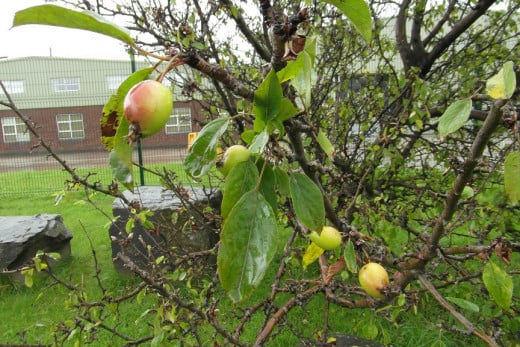
Crab Apple - (Mallus) Some varieties produce brightly coloured fruits which are very decorative, others produce fruit which look like deformed apples which are less decorative, but great for crab apple jelly. They can be used as a cross pollinator for ordinary apple trees. If you decide to buy one for this purpose, make sure you get a variety which flowers at the same time as the apple variety you choose.
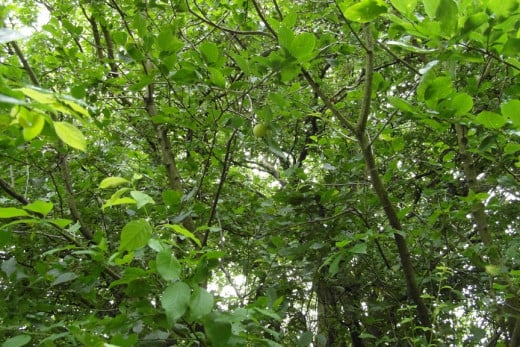
Pear (Pyrus) - a downside with pear trees are that they flower a bit earlier than apple trees so are more likely to suffer from frosted blossom affecting . fruit production. Again for best results plant at least two varieties such as Williams and Beurre Hardy.
Plum (Prunus) - Plums are suitable for small gardens if grown on a dwarfing root stock. Some, such as the very popular 'Victoria' plum, are self fertile while others are best planted with a suitable companion of a different variety.
Quince (Cydonia) - Quince is a relative of the pair and quince root stock is often used to graft pear varieties onto. Quinces are mainly used in jams and jellies. Quince trees self pollinate so you only need to plant one.
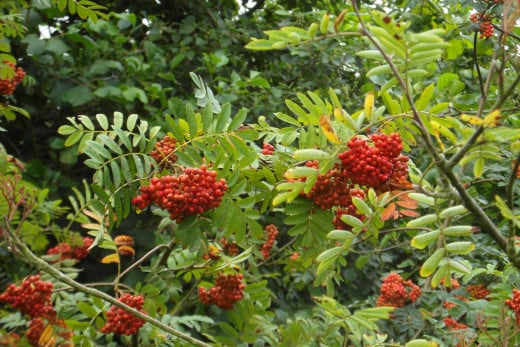
Rowan (Sorbus) - you might not immediately think of rowan as an edible fruit, but the berries can be used to make a very acceptable jelly for accompanying cold meats. The fruit is also decorative in autumn and enjoyed by the birds. I think it makes a good tree for a smaller garden because its leaves don't cast dense shade
Other fruit trees you could try include apricot, all the citrus fruits, damsons, elderberry, fig, gages, medlar, mulberry, nectarine and peach.
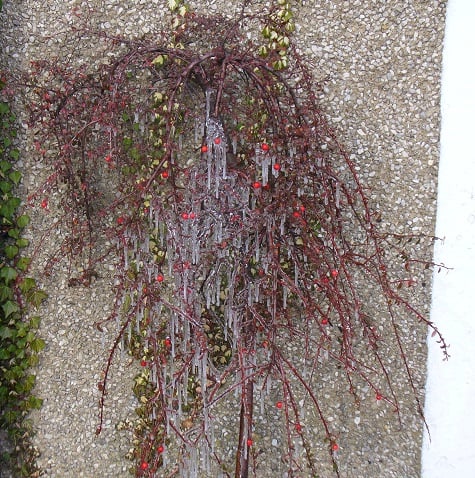
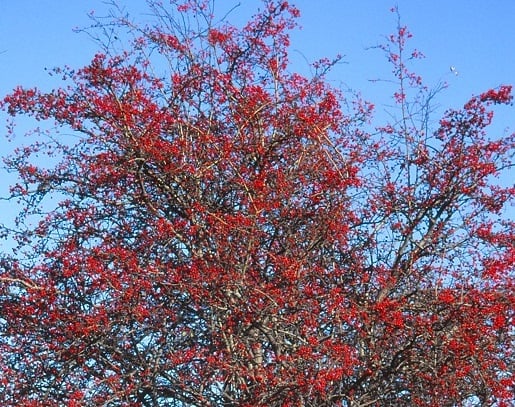
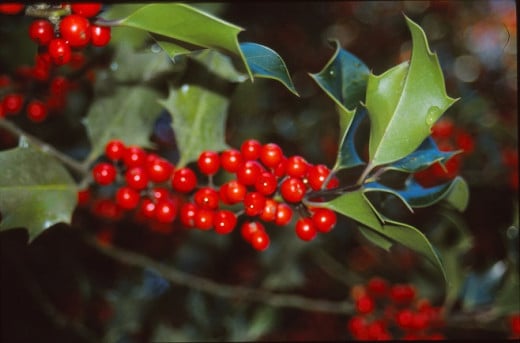
Ornamental Fruit Shrubs
Beauty Berry (Callicarpa) - the novelty of this plant is that some varieties have lilacy purple berries on bare stems in autumn. To ensure a good crop of berries plant more than one so that cross pollination can occur.
Cotoneaster - a tough group of plants with a reputation for growing anywhere and seeding itself about the garden. Cotoneasters are very reliable when it comes to berry production and often hold their berries throughout winter. The common varieties have red berries but C. rothschildianus has yellow berries if you want some variation. Cotoneaster can look good as a standard plant grown in a pot and can make an attractive bonsai too.
Hawthorn (Crataegeus) - hawthorn almost made it into the edible fruits section as the berries can be made into a savory jelly, however opinion as to the tastiness of the jelly is not altogether complimentary and few people bother with it. As a decorative feature however I love to see a hawthorn covered in berries either as a hedge, bush or small tree. Hawthorn is a tough shrub reliable in most situations and great for hedging.
Holly (Ilex) - Synonymous with Christmas the holly is a lovely decorative berry. Although yellow berried varieties are available and ones with variegated leaves, I don't think you can beat the contrast of red berries against the dark green leaves of traditional varieties. There are self pollinating varieties, ideal if you only want one holly, but otherwise holly is unusual in having male and female vairieties. The female ones produce the berries, but to get a relaible crop of them you should plant a male variety nearby.
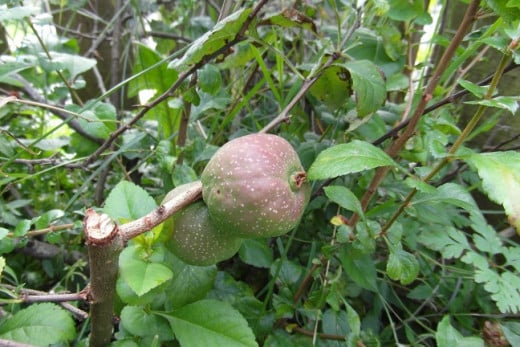
Japanese Quince (Chaenomeles) - also known by its older name of japonica. Although the fruits are technically edible, no-one has much positive to say about them so it stays firmly in the ornamental fruit corner! The rather misshapen fruits are not particularly decorative starting green and turning yellowing brown. This is a plant grown for the pink, red or white flowers rather than the fruit.
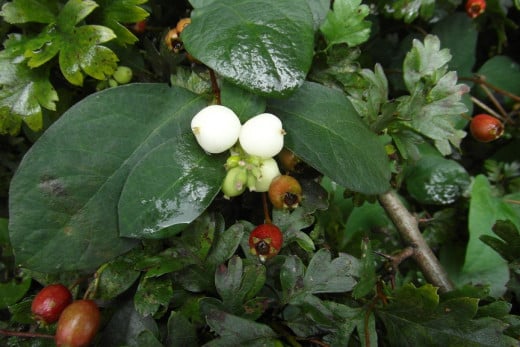
Prickly Heath (Pernettya) - with white, pink and purple berried varieties prickly heath is good for autumn colour but will only thrive if you have acid soil or plant it in a tub of ericacious compost. Like holly there are usually male and female plants - the females produce the berries, but need a male nearby for pollination!
Pyracantha - also known as firethorn, pyracantha is a good berry producing shrub. Best known for growing up walls and fences it can be grown as a freestanding hedge. There are orange and yellow berried varieties if you want a change from red.
Snowberry (Symphoricarpus) - with a mouthful of a Latin name it's not surprising that most people just use the name snowberry because the white berried variety is the one we are most familiar with. However there varieties with pink or purple berries too such as S. doorenbosil 'Magic Berry'.
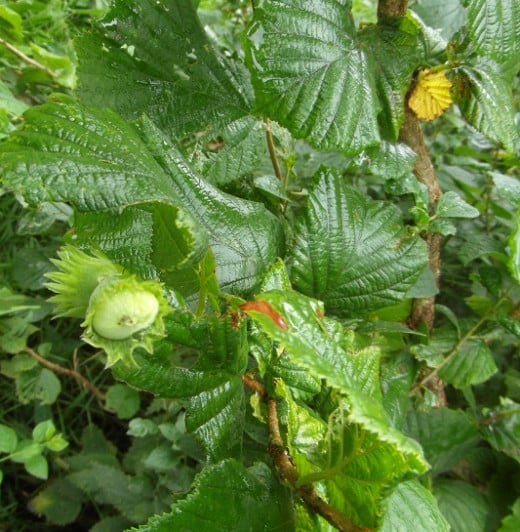
Nut Trees
In temperate climates hazlenut and walnut are your most obvious nut tree options, it is easy to forget about sweet chestnuts which do well and you could have a go with almonds in a sheltered sunny spot as well. In tropical climates you have a much greater choice of nuts to grow.
Hazelnut (Corylus) - also known as cobnuts and filberts. A lot of hazel varieties need to be cross pollinated ideally by a different variety of hazel in order to produce nuts. It can make a useful and productive hedge - the only difficulty being getting to the nuts before the squirrels do.
Walnut (Juglans) - will produce nuts even if planted alone. Walnuts are not a tree for the smaller gardens because they grow to at least 20ft and have a similar spread, but if you have a small orchard they are a worthwhile addition.
Sweet Chestnut (Castanae) - they produce better chestnuts in a warm and sunny year. Most varieties are not suitable for a small garden and older varieties can take years to bear fruit. But some of the newer ones such as 'Marigoule' produce chestnuts at a young age and are worth a go if you like the idea of roasting home grown chestnuts.


